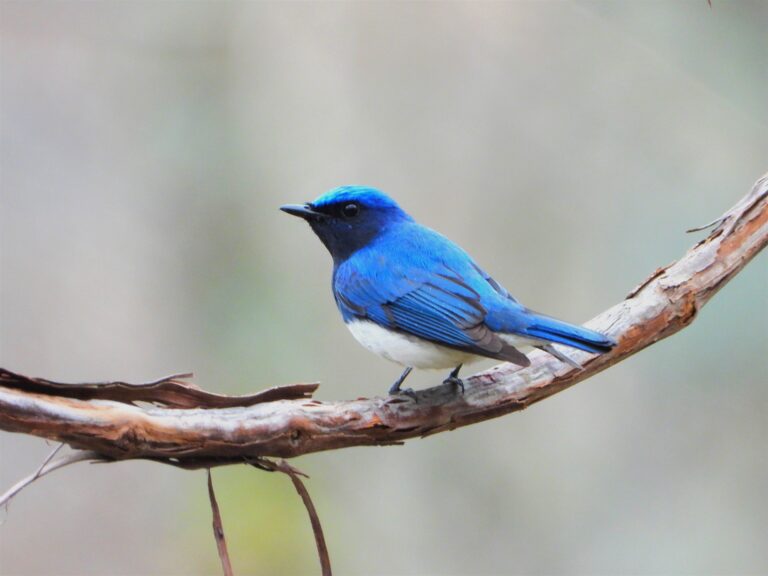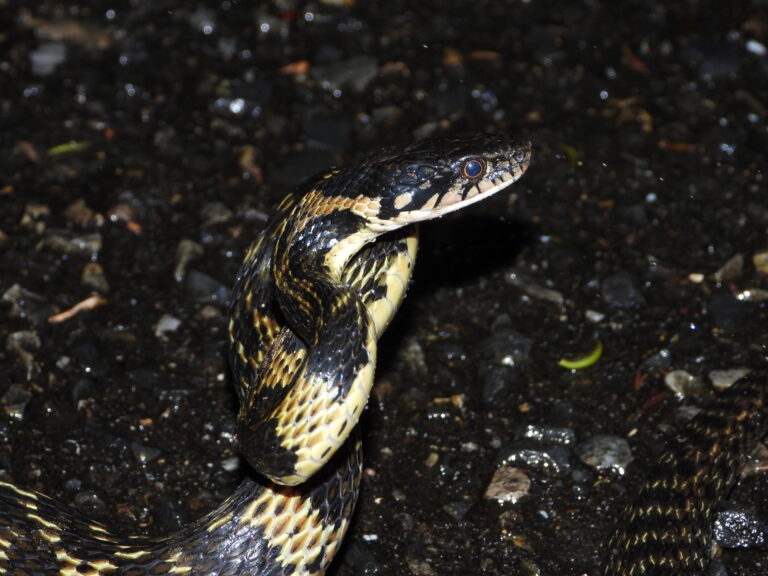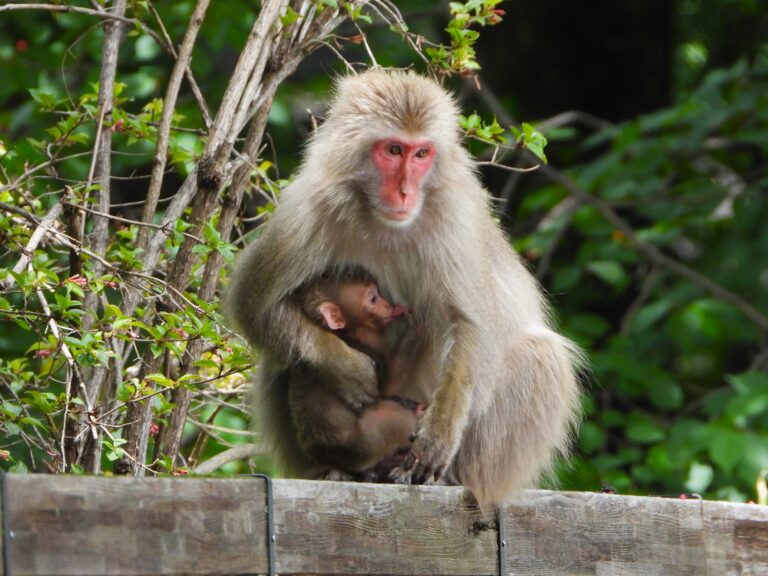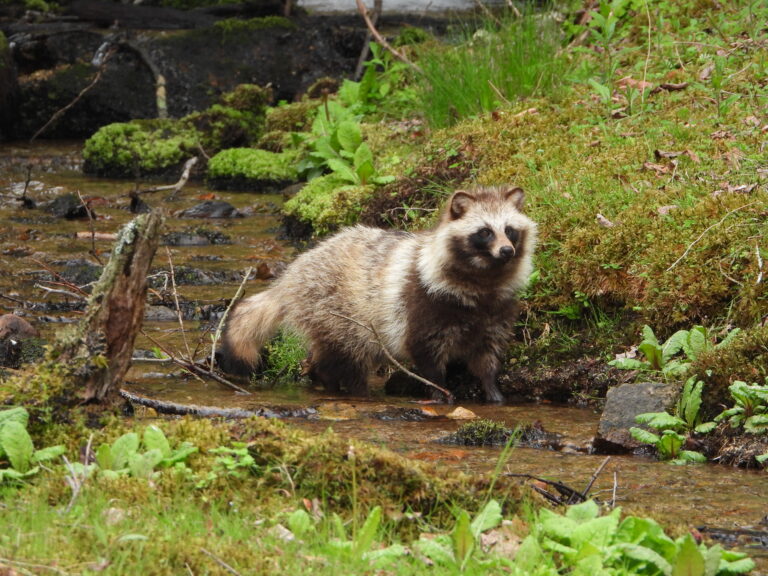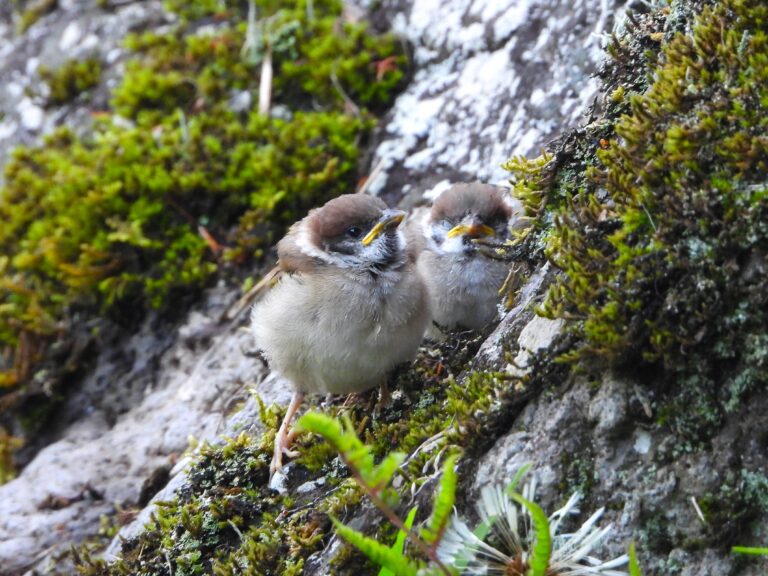8 Snakes of Honshu, the Main Island of Japan
Quick Answer
Honshu, the main island of Japan, is home to eight native snake species: the Japanese Rat Snake, Japanese Four-lined Rat Snake, Japanese Woodsnake (Jimuguri), Oriental Odd-tooth Snake, Tiger Keelback, Japanese Mamushi, Takachiho Snake, and Hibakari.
Two of these are venomous and medically important: the Japanese Mamushi and the Tiger Keelback.
Introduction
Honshu, Japan’s largest and most populous island, offers a wide range of habitats—rice paddies, forests, and mountains—that support a surprising diversity of reptiles. Among them are eight species of snakes. Most are harmless and play vital roles in the ecosystem, while a few can pose risks if approached carelessly.
This article introduces all eight snakes with photos and concise descriptions, showing where you might encounter them and how to stay safe.
When and Where to See Snakes
- Active season: April to October (warm months).
- Best time: Morning and late afternoon; some species become nocturnal during hot summer.
- Habitats:
- Streams and paddies → Tiger Keelback, Hibakari
- Fields and grasslands → Mamushi, Four-lined Rat Snake
- Villages and attics → Japanese Rat Snake
- Leaf-littered mountain forests → Takachiho Snake
The 8 Snakes of Honshu
1) Japanese Rat Snake (Elaphe climacophora)
Honshu’s largest snake, often 1.5–2 meters long. Non-venomous. Common around villages and paddies, where it helps control rodents. Famous color morphs include the albino “Iwakuni White Snake” and melanistic “Crow Snake.”
→ Read the full species profile
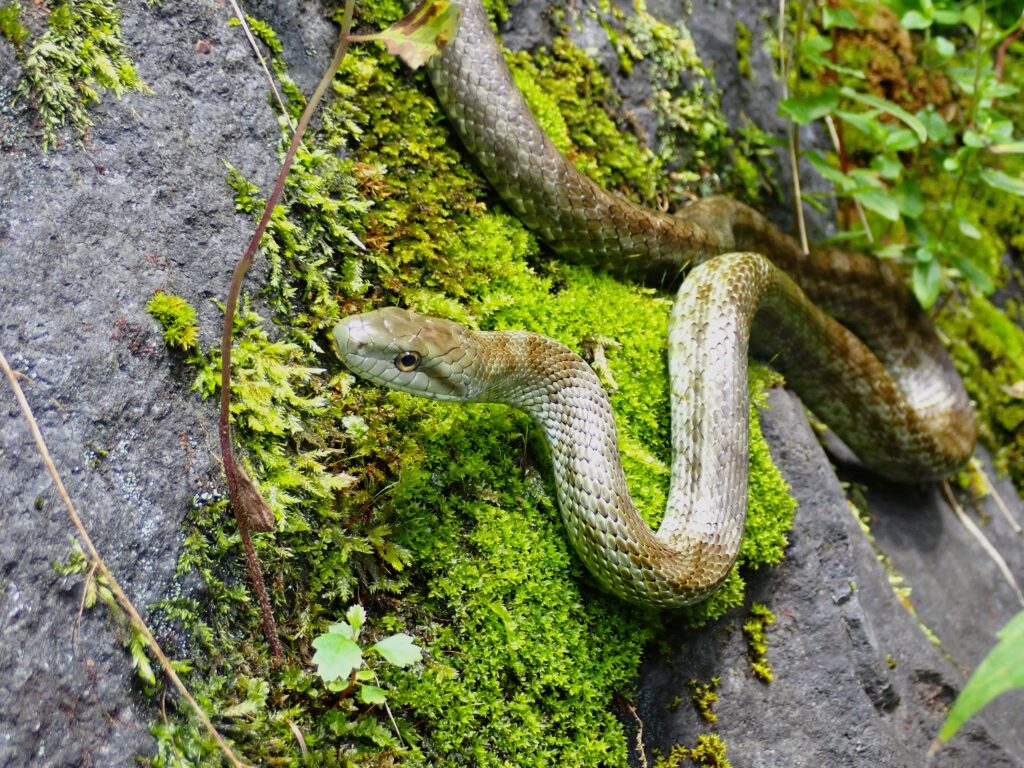
2) Japanese Striped Snake (Elaphe quadrivirgata)
A slender, harmless snake with four yellow stripes running along its back. Frequently seen in farmland and grasslands, often basking on sunny days.
→ Read the full species profile
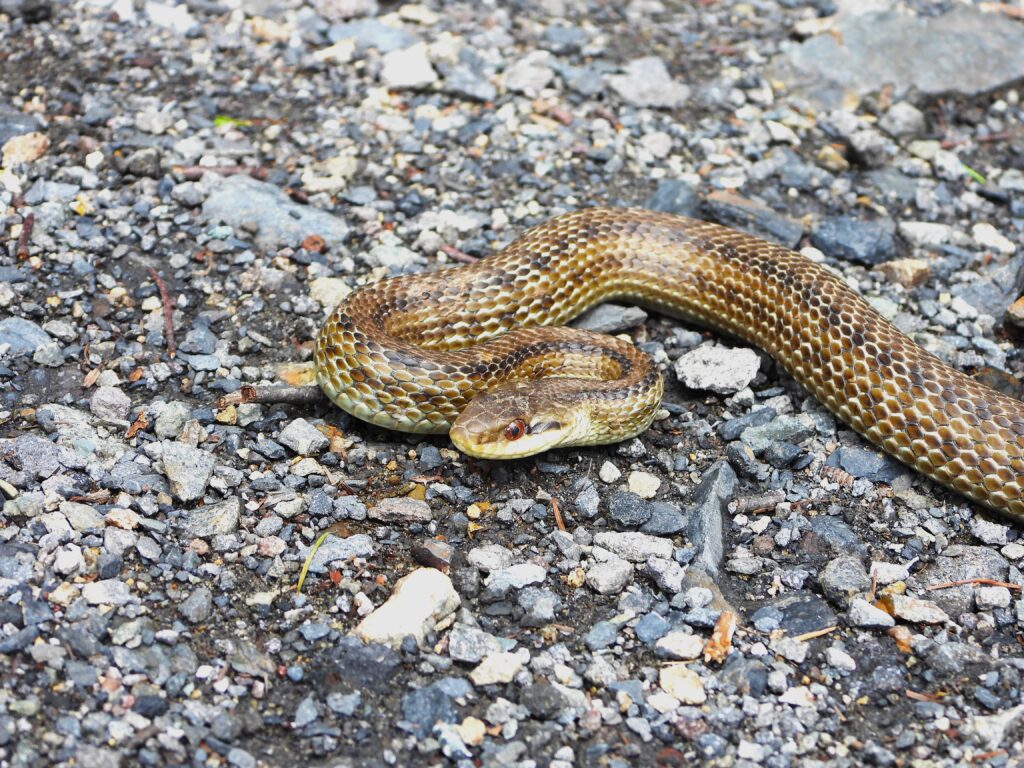
3) Japanese Woodsnake / Jimuguri (Euprepiophis conspicillata)
A rare, reddish-brown burrowing snake that spends much of its life underground. Encounters are unusual and always memorable.
→ Read the full species profile
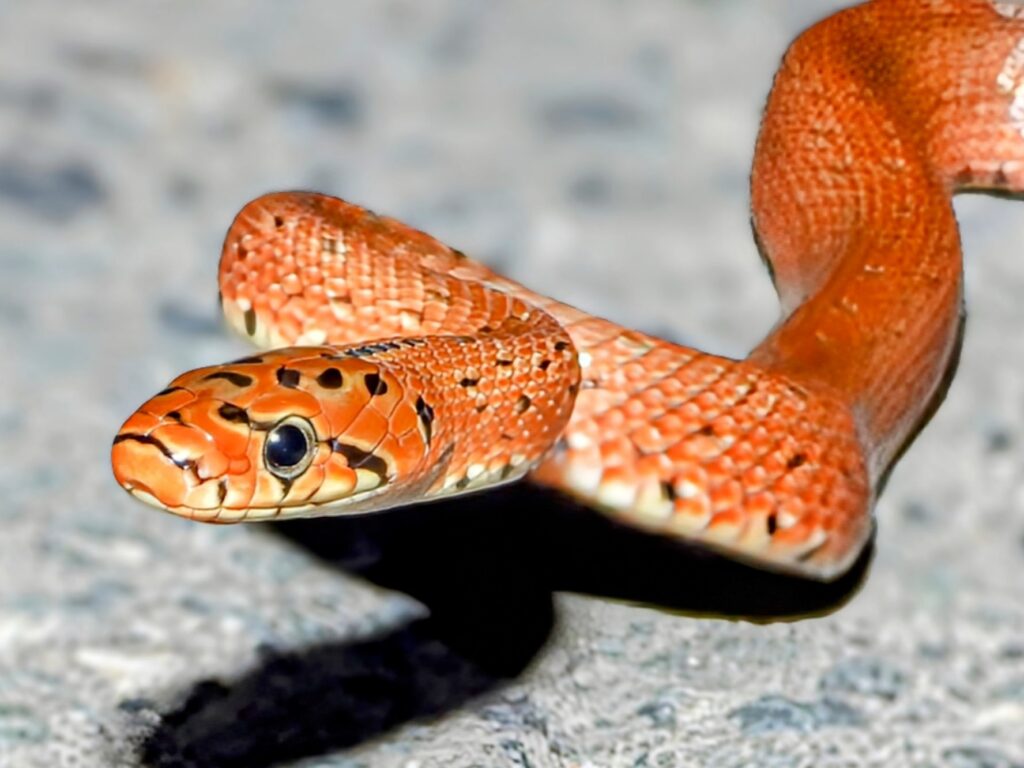
4) Oriental Odd-tooth Snake (Lycodon orientalis)
A nocturnal, non-venomous snake. Typically black-and-white banded or mottled, though some populations show brownish tones. Found in woodlands and rocky slopes after dusk.
→ Read the full species profile
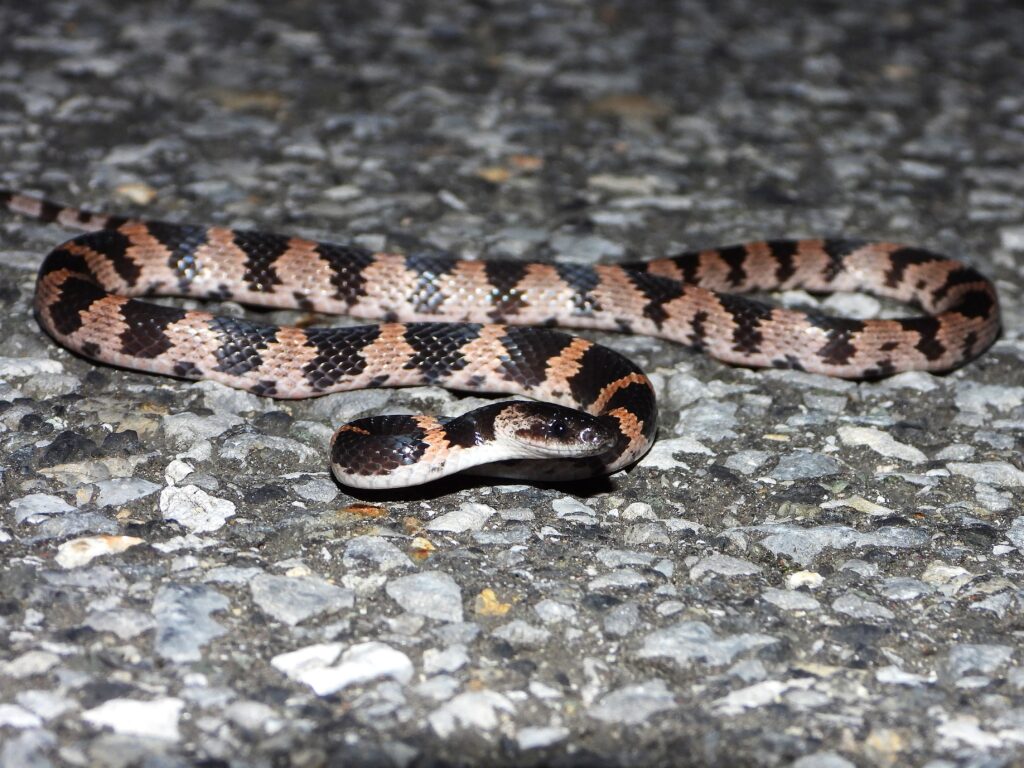
5) Tiger Keelback (Rhabdophis tigrinus)
Semi-aquatic, usually near streams and rice paddies. A rear-fanged snake with medically significant venom. Uniquely, it stores toxins from toads in its neck glands. Shy in nature, but never handle this species.
→ Read the full species profile
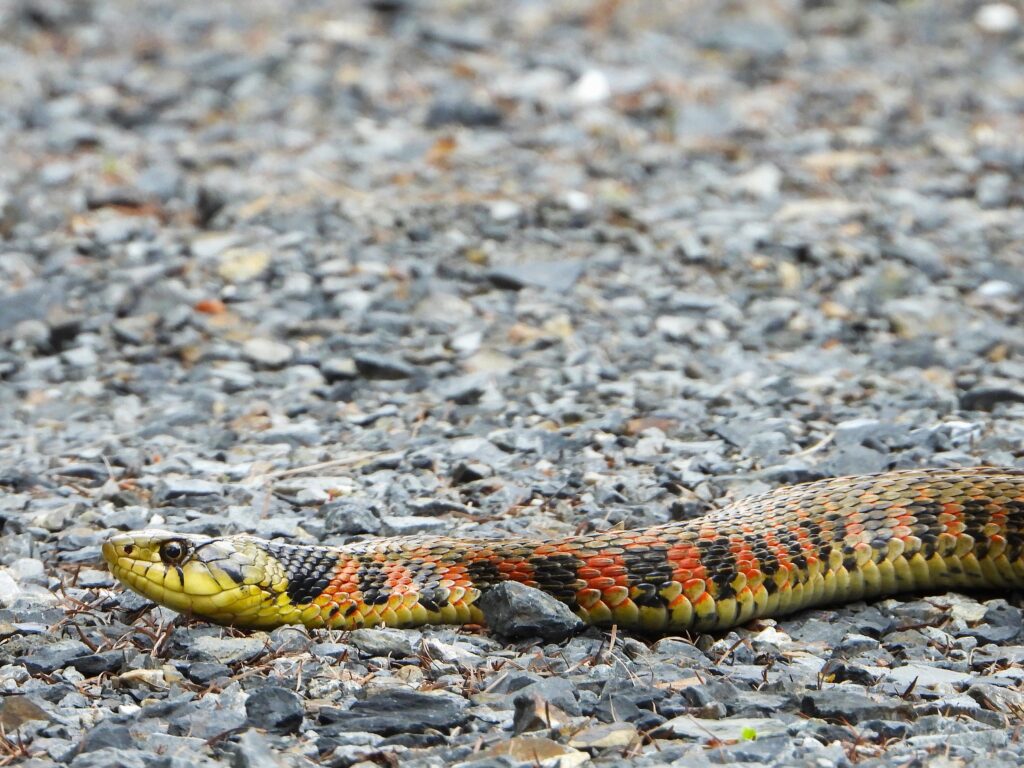
6) Japanese Mamushi (Gloydius blomhoffii)
A small but venomous viper with a triangular head and bold zigzag or banded markings. Prefers damp fields and forest edges. Responsible for most snakebite cases in Japan—avoid at all costs.
→ Read the full species profile
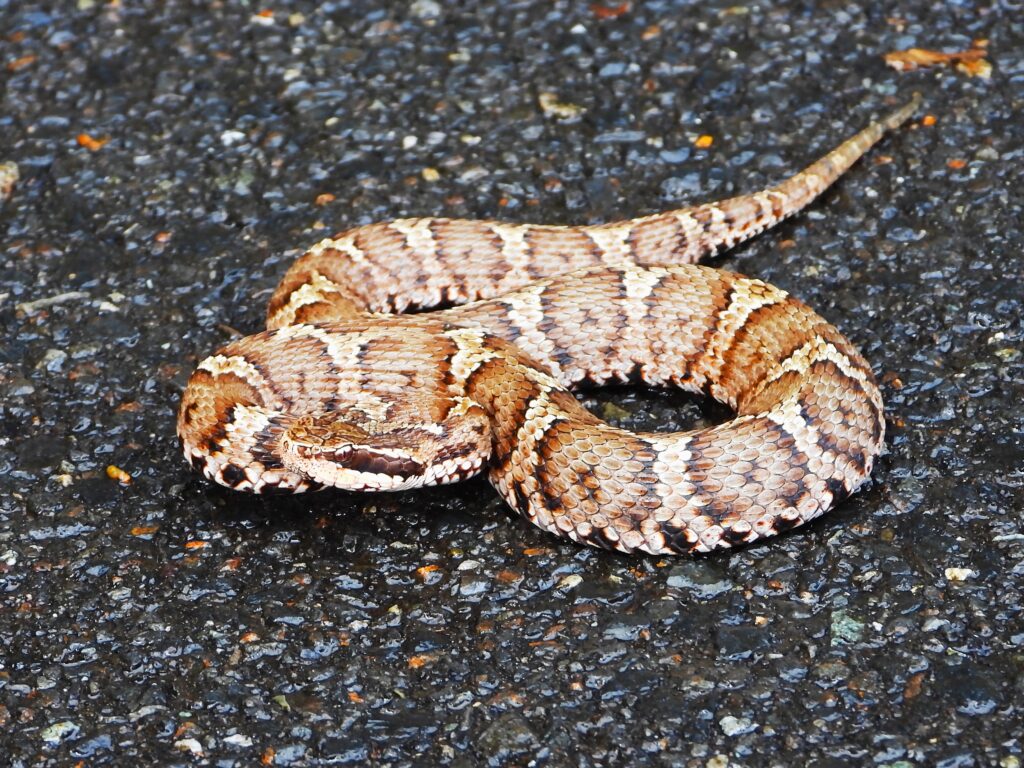
7) Japanese Odd-scaled Snake (Achalinus spinalis)
A secretive forest-dweller with glossy, iridescent scales. Lives under fallen leaves and logs. Rarely seen, even by experienced hikers.
→ Read the full species profile
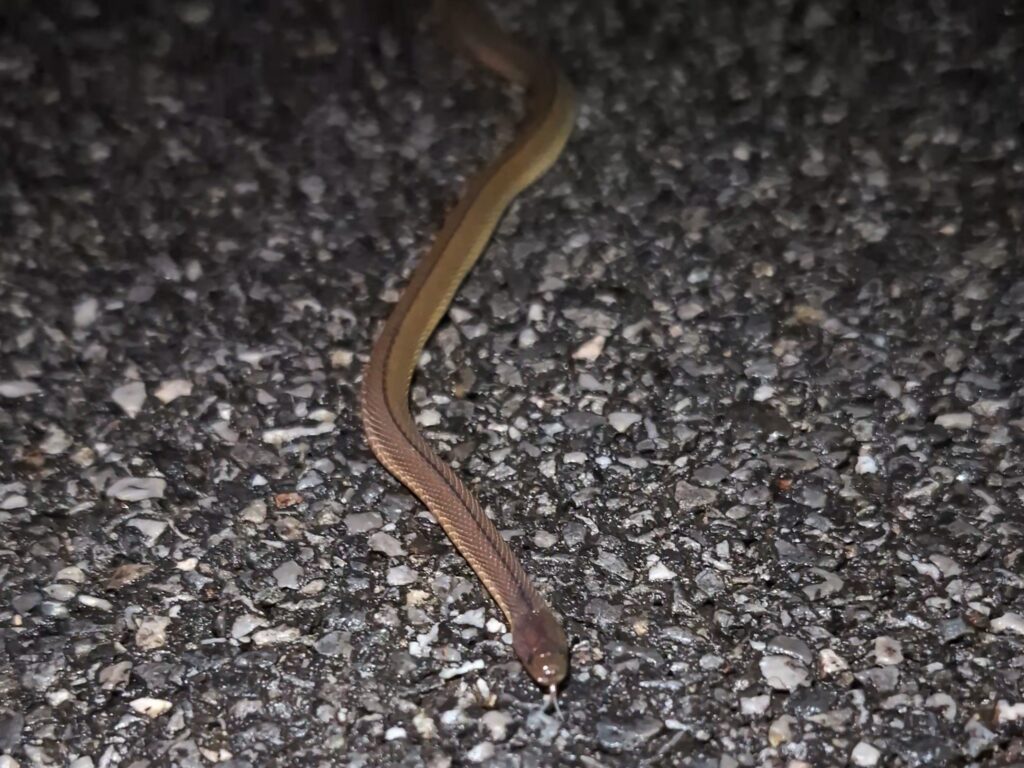
8) Hibakari (Hebius vibakari)
No photo available yet
A small, harmless snake often found near rivers and wetlands. Feeds on fish and tadpoles. Its name comes from folklore—“fatal within a day”—but in reality it poses no danger to humans.
→ Read the full species profile
Safety Tips for Hikers and Photographers
- Most snakes are shy. Look, don’t touch.
- If you encounter Mamushi or Tiger Keelback, keep several meters away.
- Wear boots and long pants when walking through tall grass or paddies.
- Use a headlamp at night; snakes sometimes bask on paths or roads.
- If bitten: stay calm, keep movement minimal, and seek immediate medical care. Cutting, suction, or tourniquets are not recommended by medical professionals.
Author’s Impression
The Japanese Rat Snake is always the first snake I notice in spring, calmly moving through barns and rice fields.
One of my most sobering moments was finding a Mamushi perfectly camouflaged in forest leaf litter—a reminder that every step in nature deserves respect.
And spotting the elusive Jimuguri felt like discovering a hidden treasure of the mountains.
FAQs
Q1. Are there venomous snakes on Honshu?
Yes. The Japanese Mamushi and Tiger Keelback are venomous. Avoid handling any snake you cannot identify.
Q2. Are snakes common in Tokyo or Kyoto?
Rare in city centers, but possible on the outskirts—riverbanks, temple forests, and rural parks.
Q3. What season is best for seeing snakes in Honshu?
From April to October, especially on warm, windless days.
Q4. Is the “Iwakuni White Snake” a separate species?
No. It is an albino population of the Japanese Rat Snake, protected as a cultural and natural treasure.


